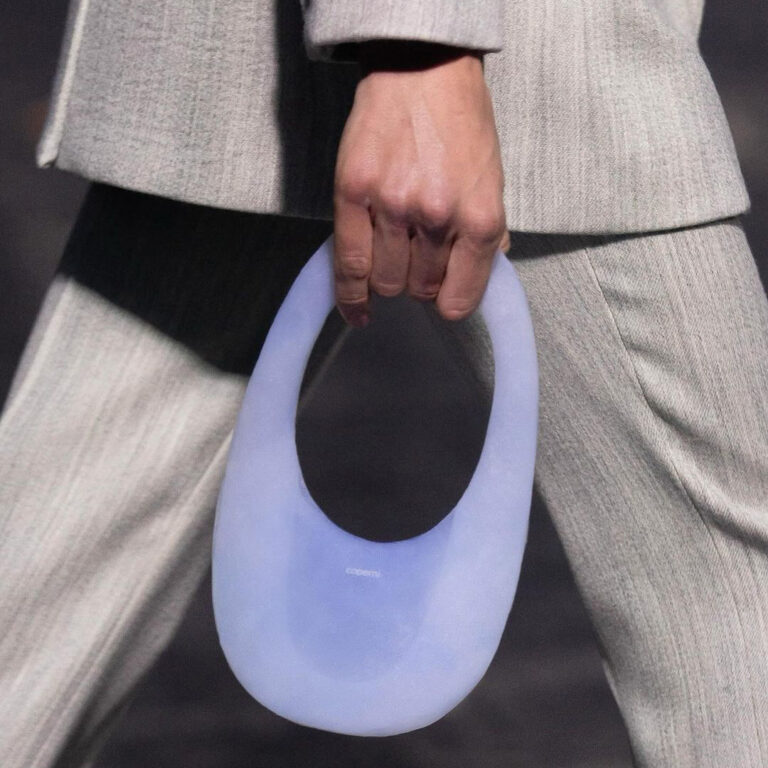Today, fashion is moving more rapidly than ever. We live in a special era in which opportunities to change the fashion industry are countless. That doesn’t come as a total surprise, since change is needed tremendously. Besides the industry-changes that need to be made, there are many things you can do yourself. In this series, therefore, we guide you through the most common ways to buy more thoughtfully, sustainably and ethically. After all, your search for sustainable fashion should be fun. Let’s kick-ff with a not so new phenomenon: cherish and repair old clothes.
Cover photo: © Pexels
Sustainable fashion
Sustainable fashion has become more than the next hype. Big retailers, high fashion labels and many customers have reached the point on which they acknowledge the huge influence of the fashion industry on our planet.
More and more sustainable concepts pop-up. Take Ikigai Labels, for example: a melting pot of sustainable brands of all kind. You’ll find fancy made to order items, as well as more accessible garments (for every budget). We recently interviewed Helene Oudman, the creative mind behind this concept. According to her, “there’s a lot to win in the fashion industry.”
However, fast fashion companies still offer low priced items while keeping up with the latest trends. Zara adds new items every week and adidas’s NEO line is designed, produced and delivered to stores within only one month. These types of actions are typical for the industry.
Therefore it’s about time to be more aware of your own shopping behavior. Let us guide you through it.
https://www.instagram.com/p/B67sNqaljTK/
Cherish and repair
To minimize your environmental impact, wonder whether you should really ditch a garment or whether it will still fulfill its purpose when being repaired. Cherishing your garments in the long run works when you invest in certain items that won’t loose their appeal. Choosing a timeless stunner might be hard, therefore we created an investment piece checklist.
How to take care of your garments?
Once you’ve invested in a wardrobe you want to cherish for the rest of your life, it’s good to know how to take care of your garments and accessories. We’ve listed the most important tips and tricks below.
https://www.instagram.com/p/B4AtY1MqF7U/
1. Leather shoes
Leather shoes could (almost) last a lifetime, when you take care of them properly. With the steps below you’ll make sure they will last as long as possible.
Cleane your leather shoes gently by removing dirt with a soft cloth. Apply shoe cleaner (or saddle soap) with a soft brush and rub gently. In case of salt stains, use a mix of water and vinegar. Mix 1 part vinegar and 2 parts water. Gently rub it into the stain with a cloth or brush. Let your shoes air dry.
Polish your shoes once cleaned. Start with a shoe conditioner or a leather grease, to prevent your leather shoes from drying out. After the conditioner has done its job, it’s time for polishing. Ask your local shoemaker for advice when it comes to the best shoe polish for your shoes.
Weatherproof your shoes with an anti-rain spray or apply an environment friendly bee wax on top of the shoe polish.
Storing your shoes in the right way is important for their long-term ‘health’. Insert shoe tress when not wearing them. Store them in a dust bag or other breathable material. At last, your favorite leather shoes need a break after each wear; alternate between at least 2 pairs.
https://www.instagram.com/p/B6DSPHjJykE/
2. Dry clean
Washing your garments will eventually kill them. Of course you can’t wear a sweater for a lifetime without washing it. However, it’s important to take a closer look at the washing prescriptions and stick to these. Unless when a prescription label says “Dry Clean Only”, it’s probably safe to wash it by hand. When in doubt, ask a dry cleaner or professional tailor.
Always bring garments of the materials below to the dry cleaner:
– Silk
– Many types of wool
– Velvet
Other items that usually can’t be cleaned at home: blazers, pantalons, (wool) coats, evening wear and items with embellishments.
3. Clean at home
Before spending all your money at the dry cleaner’s, there are some materials you can safely clean at home:
– Cotton
– Denim (only when really necessary; wash cold and inside-oud)
– Viscose
– Many knits
– Syntetic fibres such as nylon and polyester
– Cashmere (by hand and let it flat dry)
https://www.instagram.com/p/B4yPEfUA4_w/
You will also like: Why recycled plastic won’t rescue our planet










